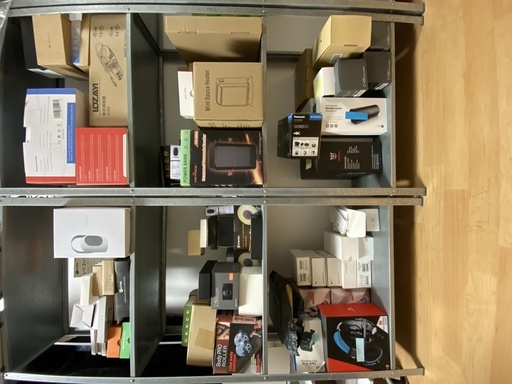-
シーンから探す
- ブランド別
- ネックレス
- アクセサリー
- 自転車、サイクリング
- その他
- 健康用品
- ショルダーバッグ
- 船、ボート
- トイガン
- デニム/ジーンズ
- パーツ
- 工具、DIY用品
- 小物
- その他
- ボディバッグ/ウェストバッグ
- 楽器、器材
- フィルムカメラ
- 工芸品
- テーブルゲーム/ホビー
- フィッシング
- クラブ
- キッチン家電
- 素材/材料
- サングラス/メガネ
- キッチン家電
- 魚類、水生生物
- 大阪府の家具
- コミック/アニメ
- 着物
- キャラクターグッズ
- ブーツ
- バングル/リストバンド
- パーツ
- 店舗用品
- 新潟県のその他
- 電気シェーバー
- コスプレ
- ノートPC
- 工芸品
- キャラクターグッズ
- ミュージシャン
- DTM/DAW
- その他
- カードゲーム
- その他
- ラケット(硬式用)
- 工具、DIY用品
- ナイロンジャケット
-
贈る相手から探す
- ゲーム
- 腕時計(アナログ)
- 美術品
- イヤフォン
- 美容/健康
- 腕時計(アナログ)
- 農業
- オートバイ車体
- その他
- ゲームキャラクター
- スニーカー
- 魚類、水生生物
- CD
- その他
- テント/タープ
- 家具、インテリア
- キャップ
- スニーカー
- ベビーカー
- 香川県の家具
- ブレスレット
- 農業
- スニーカー
- オートバイ車体
- オーディオ機器
- 模型/プラモデル
- オーディオ
- 特撮
- 国内自動車本体
- ブランド別
- バッグ
- キャップ
- 愛知県のその他
- タレント/お笑い芸人
- ブルゾン
- バッグ
- その他
- 愛知県の家具
- その他
- 雑貨
- オートバイ車体
- スラックス
- 工具、DIY用品
- 兵庫県の家具
- PC/タブレット
- PC/タブレット
- サンダル
- 遊戯王
- フィッシング
- トイガン
- シャツ/ブラウス(七分/長袖)
- 腕時計(アナログ)
- 楽器、器材
- カテゴリから探す
- おまとめ注文・法人のお客様
ハリー・ウィンストン ラウンドカット・ソリティア・リング ベスト
-
商品説明・詳細
-
送料・お届け
商品情報
HARRY WINSTON ラウンドカット・ソリティア・リング 世界で最も希少なダイヤモンドを使用した比類なきブライダルジュエリーが、永遠の愛に煌きを添えます。 ハリーウィンストンの婚約指輪の中でも、スタンダードな人気モデルです。 センターに向かってエレガントに絞られたクラシックなプラチナ製バンドが、センターダイヤモンドの輝きを引き立て、大粒のダイヤモンドがゴージャスな印象を与えます。 “キング・オブ・ダイヤモンド”のレガシーをあなたの手に。 GIA DIAMOND DOSSIER® (2014年6月25日) Measurements 5.14 - 5.17 x 3.18 mm Carat Weight 0.52 carat Color Grade F Clarity Grade VS1 Cut Grade Excellent Depth 61.7% Table 59% Crown Angle 34.0° Crown Height 13.5% Pavilion Angle 41.4° Pavilion Depth 44.0% Star Length 50% Lower Half 80% Girdle Medium to Slightly Thick, Faceted, 4.0% Culet None Polish Very Good Symmetry Excellent Fluorescence None Clarity Characteristics Crystal, Pinpoint ほぼ未使用ですが、新品仕上げをしてから発送いたしますので新品同様とお考えいただいて大丈夫です。 購入場所 ハリーウィンストン銀座本店 購入時期 2015年 カラー···シルバー 材質···プラチナ 装飾···ダイヤモンド
残り 7 点 1,357,000円
(851 ポイント還元!)
翌日お届け可(営業日のみ) ※一部地域を除く
お届け日: 12月09日〜指定可 (明日16:00のご注文まで)
-
ラッピング
対応決済方法
- クレジットカード
-

- コンビニ前払い決済
-

- 代金引換
- 商品到着と引き換えにお支払いいただけます。 (送料を含む合計金額が¥291,028 まで対応可能)
- ペイジー前払い決済(ATM/ネットバンキング)
-
以下の金融機関のATM/ネットバンクからお支払い頂けます
みずほ銀行 、 三菱UFJ銀行 、 三井住友銀行
りそな銀行 、ゆうちょ銀行、各地方銀行 - Amazon Pay(Amazonアカウントでお支払い)
-

































